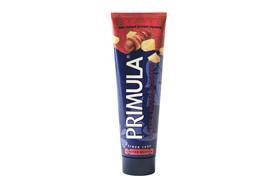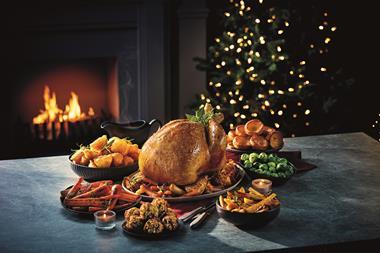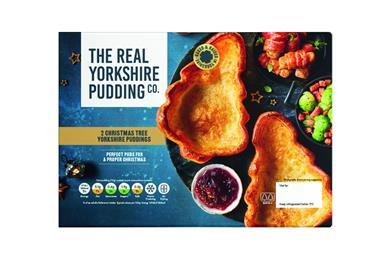Is it possible to supply to Wal-Mart and still keep hold of decent profit margins? Amy Balchin finds some cheer in a new study
Nobody ever said supplying the world’s largest retailer was easy, but with more than £150bn going through its tills last year, Wal-Mart is a retailer that few suppliers can afford to ignore. If they can win even a small proportion of Wal-Mart’s global business, their volumes could go through the roof. But do their margins have to go through the floor?
Global management consultancy Bain & Company analysed seven years of data for 38 companies selling more than 10% of their volumes through Wal-Mart to find out whether it was possible to have your cake and eat it too.
The study, Winning with Wal-Mart, is expected to be completed in early 2005.
However, research leader Gib Carey has already identified nine suppliers that have managed to boost business with Wal-Mart and keep hold of their profit margins by focusing on six key principles....
In order to succeed, these winners approach Wal-Mart with the same analytic rigor and discipline that Wal-Mart applies to its own business. They, like Wal-Mart, approach all aspects of the business as a science.
They understand the value their products bring to consumers, and to Wal-Mart.
They team with Wal-Mart to continually innovate and bring new value to consumers and to Wal-Mart. And they relentlessly and aggressively push down costs and improve supply chain performance.
Winners ask themselves a number of questions, says Carey.
How much of a price premium relative to competitors will consumers pay for my products, based on product design, packaging, quality, trust and image? And why should they pay extra? What value do my products generate for Wal-Mart? What innovations will be valued by consumers and by Wal-Mart?
How does my supply chain perform today and what am I doing to improve performance in terms of on-time delivery, order lead times and full truck loads?
Top performers Energizer, Hershey, Lancaster Colony, General Mills, Kellogg, Procter and Gamble, Handleman, Kimberly-Clark and Scotts Company strive to provide a unique but consistently high quality product at a low price, and manage to sustain above average profitability and shareholder returns despite their strong links with Wal-Mart.
Lawn and garden products manufacturer Scotts was Wal-Mart’s supplier of the year in 2003. However, back in 1999 it was told in no uncertain terms it needed to be more disciplined and invest in efficiency and innovation. A spokesman says: “The Wal-Mart buyer told us our supply chain performance was horrendous, and we knew he was right.”
Scotts expanded its Wal-Mart team in Bentonville to include financial analysts and supply chain experts.
It also invested in supply chain capabilities to improve performance and launched retailer-specific brands for Wal-Mart and other customers based on retailer needs and consumer research.
Look at product design, packaging, quality, consumer trust and image, and ask how much of a price premium relative to the competitors consumers will pay for products and why. Consider the value these products generate for Wal-Mart, including gross margin return, consumer draw, and the encouragement of additional purchases. Look at how innovations can be used to differentiate the offer for the Wal-Mart customer and how this will benefit Wal-Mart.
It sounds obvious, but before you even think about talking to Wal-Mart, says Carey, do your homework. Know the price elasticity of your products, who your competitors are and what Wal-Mart’s branded and own label alternative to your product might be.
Be ready to adapt your products in close collaboration with Wal-Mart, exploiting its knowledge of customers. Again, be ready to work with Wal-Mart. Improve your distribution and supply chain.
Learn from how it runs its own business and try and emulate its approach by ploughing profits back into growth and efficiency investments and keeping your business processes simple.
>>what wal-mart watches like a hawk
Suppliers that follow Wal-Mart’s own way of doing business have the most to gain, says research leader Gib Carey
COST OF GOODS Unrelenting pressure on suppliers. Low complexity product assortment
DISTRIBUTION COSTS Scale distribution facilities. Invest heavily in automation
INSTORE COSTS Use IT to keep shelves stocked with low labour cost. Eliminate cost of traditional product promotions
CORPORATE OVERHEADS Centralise all corporate functions. Simplify processes to minimise resources needed
>>the ups and downs of dealing with a titan
It paints a miserable picture. As a supplier’s exposure to Wal-Mart goes up, its profit margins go down.
After trawling through the accounts of 38 companies with a high exposure to Wal-Mart, Bain & Company found that suppliers selling 10% of their volume or more through the world’s largest retailer had an average EBIT (earnings before interest and tax) margin of 12.7%.
However, for dedicated suppliers the figure plummeted to just 7.3%. In its study of 38 companies Bain & Company’s research shows just 24% sustaining above average profitability and shareholder returns.
American Greetings
Atari
Auora Foods
Campbell
Central Garden and Pet
Clorox
Cott Corporation
Del Monte
Dial
Emerson Radio
Energizer
General Mills
Gillette
Handleman
Hasbro
Heinz
Hershey
Home Products International
Huffy
Kellogg
Kimberly-Clark
Koss
Kraft Foods
Lancaster Colony
Leapfrog
Mattel
Newell Rubbermaid
Procter and Gamble
Perrigo
Rayovac
Revlon
RJR
Russell Corporation
Sara Lee
Scotts Company
Tandy
Tropical Sportswear
VF Corporation
Copy Wal-Mart
Ask questions
Focus on value
Respond to criticisms
Understand the value of your brand
Be prepared
Do it like Wal-Mart
The Wal-Mart challenge
The 38 Wal-Mart suppliers scrutinised:
Nobody ever said supplying the world’s largest retailer was easy, but with more than £150bn going through its tills last year, Wal-Mart is a retailer that few suppliers can afford to ignore. If they can win even a small proportion of Wal-Mart’s global business, their volumes could go through the roof. But do their margins have to go through the floor?
Global management consultancy Bain & Company analysed seven years of data for 38 companies selling more than 10% of their volumes through Wal-Mart to find out whether it was possible to have your cake and eat it too.
The study, Winning with Wal-Mart, is expected to be completed in early 2005.
However, research leader Gib Carey has already identified nine suppliers that have managed to boost business with Wal-Mart and keep hold of their profit margins by focusing on six key principles....
In order to succeed, these winners approach Wal-Mart with the same analytic rigor and discipline that Wal-Mart applies to its own business. They, like Wal-Mart, approach all aspects of the business as a science.
They understand the value their products bring to consumers, and to Wal-Mart.
They team with Wal-Mart to continually innovate and bring new value to consumers and to Wal-Mart. And they relentlessly and aggressively push down costs and improve supply chain performance.
Winners ask themselves a number of questions, says Carey.
How much of a price premium relative to competitors will consumers pay for my products, based on product design, packaging, quality, trust and image? And why should they pay extra? What value do my products generate for Wal-Mart? What innovations will be valued by consumers and by Wal-Mart?
How does my supply chain perform today and what am I doing to improve performance in terms of on-time delivery, order lead times and full truck loads?
Top performers Energizer, Hershey, Lancaster Colony, General Mills, Kellogg, Procter and Gamble, Handleman, Kimberly-Clark and Scotts Company strive to provide a unique but consistently high quality product at a low price, and manage to sustain above average profitability and shareholder returns despite their strong links with Wal-Mart.
Lawn and garden products manufacturer Scotts was Wal-Mart’s supplier of the year in 2003. However, back in 1999 it was told in no uncertain terms it needed to be more disciplined and invest in efficiency and innovation. A spokesman says: “The Wal-Mart buyer told us our supply chain performance was horrendous, and we knew he was right.”
Scotts expanded its Wal-Mart team in Bentonville to include financial analysts and supply chain experts.
It also invested in supply chain capabilities to improve performance and launched retailer-specific brands for Wal-Mart and other customers based on retailer needs and consumer research.
Look at product design, packaging, quality, consumer trust and image, and ask how much of a price premium relative to the competitors consumers will pay for products and why. Consider the value these products generate for Wal-Mart, including gross margin return, consumer draw, and the encouragement of additional purchases. Look at how innovations can be used to differentiate the offer for the Wal-Mart customer and how this will benefit Wal-Mart.
It sounds obvious, but before you even think about talking to Wal-Mart, says Carey, do your homework. Know the price elasticity of your products, who your competitors are and what Wal-Mart’s branded and own label alternative to your product might be.
Be ready to adapt your products in close collaboration with Wal-Mart, exploiting its knowledge of customers. Again, be ready to work with Wal-Mart. Improve your distribution and supply chain.
Learn from how it runs its own business and try and emulate its approach by ploughing profits back into growth and efficiency investments and keeping your business processes simple.
>>what wal-mart watches like a hawk
Suppliers that follow Wal-Mart’s own way of doing business have the most to gain, says research leader Gib Carey
COST OF GOODS Unrelenting pressure on suppliers. Low complexity product assortment
DISTRIBUTION COSTS Scale distribution facilities. Invest heavily in automation
INSTORE COSTS Use IT to keep shelves stocked with low labour cost. Eliminate cost of traditional product promotions
CORPORATE OVERHEADS Centralise all corporate functions. Simplify processes to minimise resources needed
>>the ups and downs of dealing with a titan
It paints a miserable picture. As a supplier’s exposure to Wal-Mart goes up, its profit margins go down.
After trawling through the accounts of 38 companies with a high exposure to Wal-Mart, Bain & Company found that suppliers selling 10% of their volume or more through the world’s largest retailer had an average EBIT (earnings before interest and tax) margin of 12.7%.
However, for dedicated suppliers the figure plummeted to just 7.3%. In its study of 38 companies Bain & Company’s research shows just 24% sustaining above average profitability and shareholder returns.
American Greetings
Atari
Auora Foods
Campbell
Central Garden and Pet
Clorox
Cott Corporation
Del Monte
Dial
Emerson Radio
Energizer
General Mills
Gillette
Handleman
Hasbro
Heinz
Hershey
Home Products International
Huffy
Kellogg
Kimberly-Clark
Koss
Kraft Foods
Lancaster Colony
Leapfrog
Mattel
Newell Rubbermaid
Procter and Gamble
Perrigo
Rayovac
Revlon
RJR
Russell Corporation
Sara Lee
Scotts Company
Tandy
Tropical Sportswear
VF Corporation
Copy Wal-Mart
Ask questions
Focus on value
Respond to criticisms
Understand the value of your brand
Be prepared
Do it like Wal-Mart
The Wal-Mart challenge
The 38 Wal-Mart suppliers scrutinised:














No comments yet